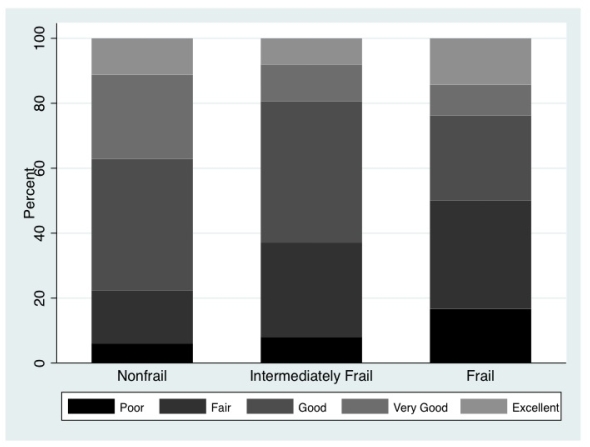Change in Health-Related Quality of Life Between Evaluation for Kidney Transplantation and Transplantation
Johns Hopkins, Baltimore.
Meeting: 2015 American Transplant Congress
Abstract number: A50
Keywords: Kidney transplantation, Quality of life
Session Information
Session Name: Poster Session A: Delayed Function/Acute Injury/Outcomes/Glomerulonephritis
Session Type: Poster Session
Date: Saturday, May 2, 2015
Session Time: 5:30pm-7:30pm
 Presentation Time: 5:30pm-7:30pm
Presentation Time: 5:30pm-7:30pm
Location: Exhibit Hall E
BACKGROUND: Kidney transplantation (KT) recipients have been found to have higher Health-related quality of life (HRQOL) than patients undergoing other forms of renal replacement therapy. It is unclear what happens to HRQOL between evaluation and KT and what factors (including novel factors like frailty) are associated with worsening HRQOL.
METHODS: 233 patients being evaluated for KT were enrolled in a prospective cohort study (November 2009 and November 2013) and went on to receive a KT (through April 2014). HRQOL was reported as being Excellent (Score=0), Very Good (1), Good (2), Fair (3) or Poor (4) at the time of evaluation and transplantation. We identified patient characteristics (age, sex, race, donor type, time on dialysis, and frailty as defined by Fried) at the time of evaluation that were associated with worse HRQOL by the time of KT using ordered logistic regression (HRQOL score at KT) and linear regression (change in score).
RESULTS: 29% at evaluation and 32% at KT reported Fair or Poor HRQOL. The median time between evaluation and KT was 9.6 months (IQR: 6-15 months; range: 2 weeks-3.5 years). Between evaluation and KT, 47.2% of recipients had stable HRQOL, 22.8% reported better HRQOL, and 30.0% reported worse HRQOL (P<0.001). Frailty at evaluation was associated with worse HRQOL at KT.
HRQOL at KT by Frailty Status at KT Evaluation (P=0.01). 
In adjusted models, only frailty at the time of evaluation was associated with HRQOL at KT (intermediately frail OR: 2.00, 95% CI: 1.15-3.49, P=0.015; frail OR: 2.97, 95% CI: 1.48-5.98, P=0.01) and worsening HRQOL at KT (intermediately frail OR: -0.05, 95% CI: -0.39-0.30, P=0.8; frail OR: 0.46, 95% CI: 0.05-0.86, P=0.026). Age, sex, race, donor type and time on dialysis were not associated with HRQOL at KT.
CONCLUSIONS: Less than half of all KT recipients report stable HRQOL between evaluation and KT. Frail KT recipients are at highest risk of worse HRQOL at KT and worsening HRQOL between evaluation and KT. Frail patients being evaluated for KT should be identified as being at high risk which persists up to the time of KT.
To cite this abstract in AMA style:
McAdams-DeMarco M, King E, Desai N, Dagher N, Lonze B, Montgomery R, Segev D. Change in Health-Related Quality of Life Between Evaluation for Kidney Transplantation and Transplantation [abstract]. Am J Transplant. 2015; 15 (suppl 3). https://atcmeetingabstracts.com/abstract/change-in-health-related-quality-of-life-between-evaluation-for-kidney-transplantation-and-transplantation/. Accessed December 19, 2025.« Back to 2015 American Transplant Congress
